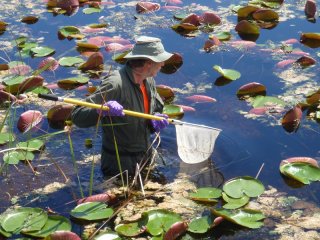Clean Water State Revolving Fund (CWSRF) Results

Since its inception, the CWSRF has helped communities throughout the nation meet the goals of the Clean Water Act (CWA) by improving water quality, achieving and maintaining compliance with environmental laws, protecting aquatic wildlife, protecting and restoring drinking water sources, and preserving the nation’s waters for recreational use.
The CWSRF programs have:
- provided over 48,900 assistance agreements to communities throughout the U.S., financing approximately $172 billion in high priority water quality projects;
- provided 33,300 assistance agreements to small communities, financing $39.1 billion and demonstrating an active role in supporting projects for populations of fewer than 10,000 people; and
- provided considerable cost savings for communities by offering an average interest rate of 1.5 percent compared to the prevailing market rate of 3.6 percent.
Environmental Benefits
- CWSRF Fiscal Year 2014 Environmental Benefits Progress Report
This report is a snapshot of the CWSRF’s positive role in improving the nation’s waters to support the goals of the CWA. The report also highlights ongoing CWSRF efforts to improve infrastructure resiliency against extreme weather events. Note: Environmental Benefits information for subsequent years is contained in the CWSRF Annual Reports.
- CWSRF Benefits Reporting Summaries
EPA collects information quarterly from states on the anticipated environmental benefits of CWSRF funded projects. The Clean Water Benefits Reporting (CBR) System is available to federal and state users to generate a variety of reports detailing program performance. CBR was implemented in 2005 as an optional means to collect project level data and became a requirement in April 2010. EPA generates summaries of the number of loans, projects, and total assistance provided by states each year. The cumulative summary details assistance provided since April 21, 2010, when CBR data entry became a program requirement. Fiscal year summaries detail yearly activity (July 1-June 30).
- Environmental Benefits of CWSRF Green Infrastructure Projects
This collection of case studies explores the efforts of five CWSRF assistance recipients to monitor or model the environmental benefits of green infrastructure practices. The results are quantifiable and highlight the environmental benefits of green infrastructure. The case studies tell the important story that across a wide variety of projects and multiple geographic areas, CWSRF programs are making a substantial difference in the national effort to prevent stormwater pollution.
Financial Reports
- 2014 CWSRF National Financial Report
Since the 51 constituent CWSRF programs are independent state-level entities (50 states and Puerto Rico), nationally audited CWSRF program financial reports are not available. However, to provide a national snapshot of CWSRF performance, EPA has developed national aggregate financial statements using the latest information reported in the CWSRF National Information Management System. The statements are best viewed as nonaudited, cash flow-based financial reports. Note: Subsequent CWSRF National Financial Reports are included within the CWSRF Annual Reports.
- National Information Management System Performance Reports
EPA collects data annually from the state CWSRF programs to document program progress and account for the use of federal funds. Data collected from the state CWSRF programs are stored in the CWSRF National Information Management System (NIMS).
The reports generated from NIMS provide national, regional, and state-by-state information on the sources of funds available to the programs and the way these funds are used for a range of water quality protection projects.
